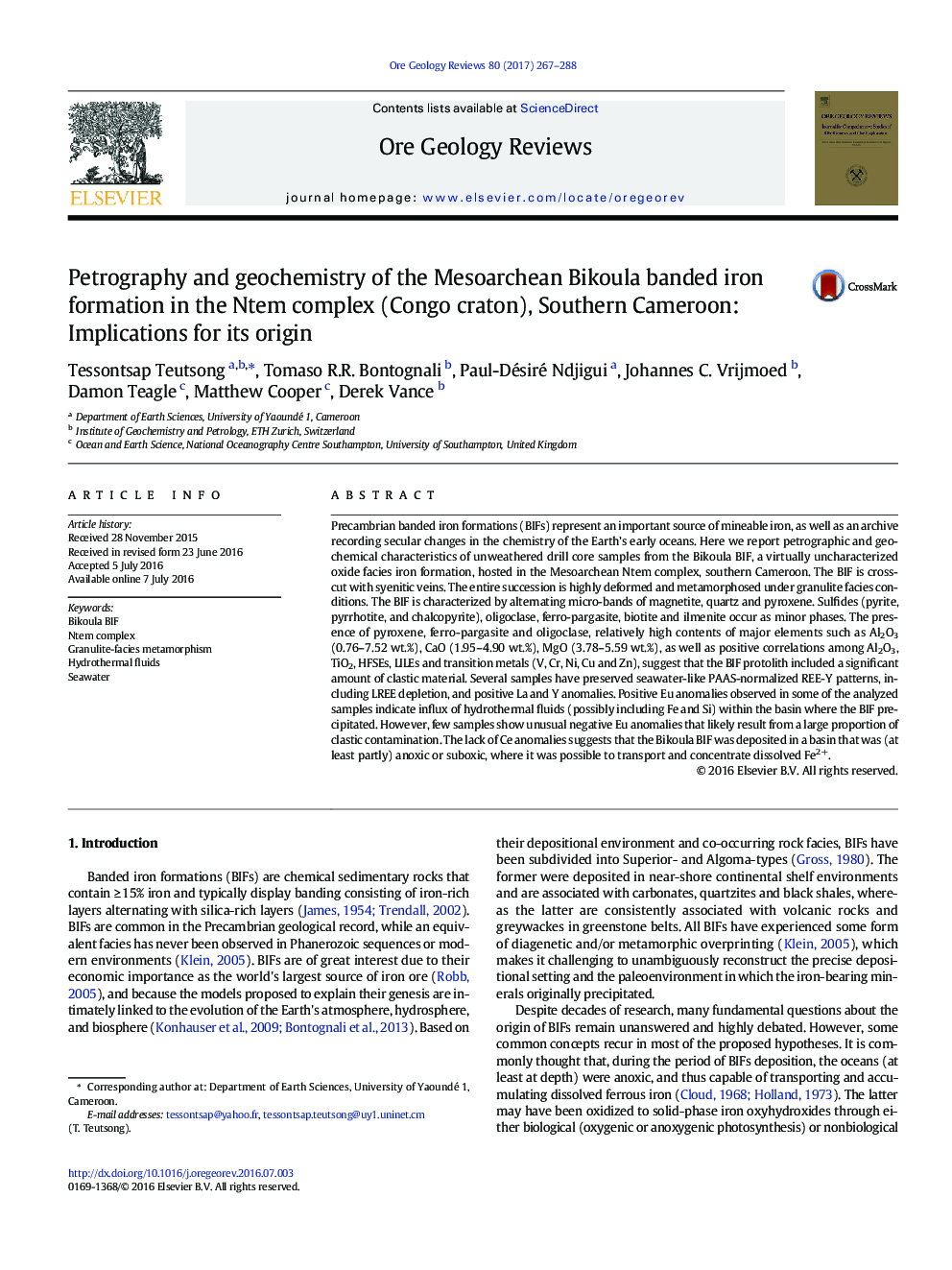| کد مقاله | کد نشریه | سال انتشار | مقاله انگلیسی | نسخه تمام متن |
|---|---|---|---|---|
| 6435605 | 1637226 | 2017 | 22 صفحه PDF | دانلود رایگان |

- The Bikoula BIF has undergone granulite-facies metamorphism.
- The primary chemical protolith was contaminated by clastic material.
- Basin waters were influenced by high-temperature hydrothermal fluids.
- Deposition occurred in a basin that was at least partly anoxic or suboxic.
Precambrian banded iron formations (BIFs) represent an important source of mineable iron, as well as an archive recording secular changes in the chemistry of the Earth's early oceans. Here we report petrographic and geochemical characteristics of unweathered drill core samples from the Bikoula BIF, a virtually uncharacterized oxide facies iron formation, hosted in the Mesoarchean Ntem complex, southern Cameroon. The BIF is cross-cut with syenitic veins. The entire succession is highly deformed and metamorphosed under granulite facies conditions. The BIF is characterized by alternating micro-bands of magnetite, quartz and pyroxene. Sulfides (pyrite, pyrrhotite, and chalcopyrite), oligoclase, ferro-pargasite, biotite and ilmenite occur as minor phases. The presence of pyroxene, ferro-pargasite and oligoclase, relatively high contents of major elements such as Al2O3 (0.76-7.52Â wt.%), CaO (1.95-4.90Â wt.%), MgO (3.78-5.59Â wt.%), as well as positive correlations among Al2O3, TiO2, HFSEs, LILEs and transition metals (V, Cr, Ni, Cu and Zn), suggest that the BIF protolith included a significant amount of clastic material. Several samples have preserved seawater-like PAAS-normalized REE-Y patterns, including LREE depletion, and positive La and Y anomalies. Positive Eu anomalies observed in some of the analyzed samples indicate influx of hydrothermal fluids (possibly including Fe and Si) within the basin where the BIF precipitated. However, few samples show unusual negative Eu anomalies that likely result from a large proportion of clastic contamination. The lack of Ce anomalies suggests that the Bikoula BIF was deposited in a basin that was (at least partly) anoxic or suboxic, where it was possible to transport and concentrate dissolved Fe2+.
Journal: Ore Geology Reviews - Volume 80, January 2017, Pages 267-288